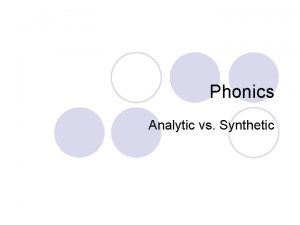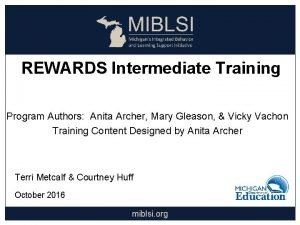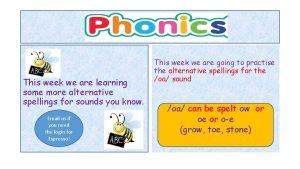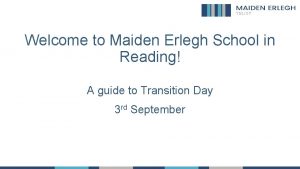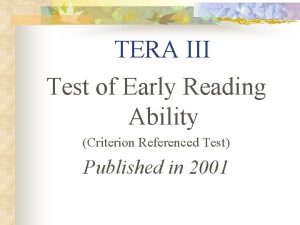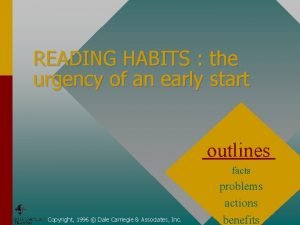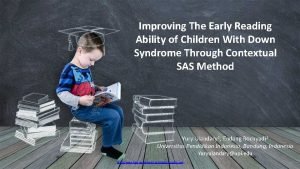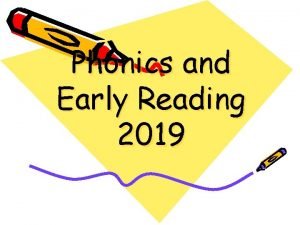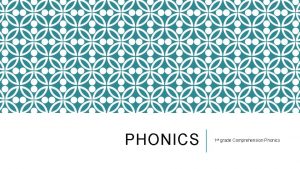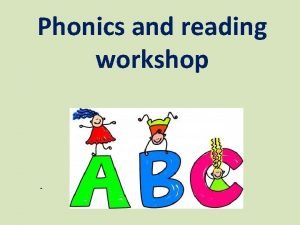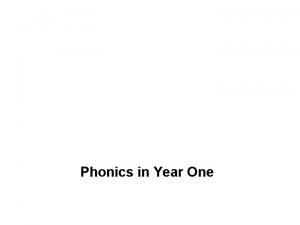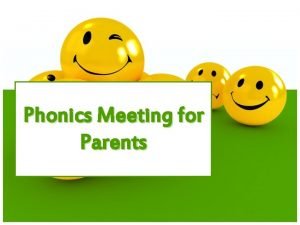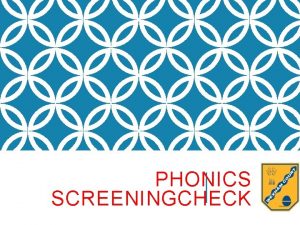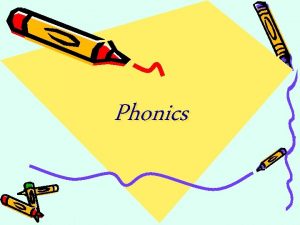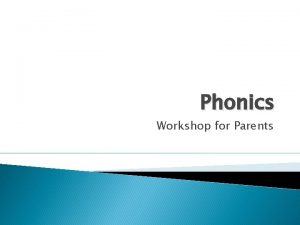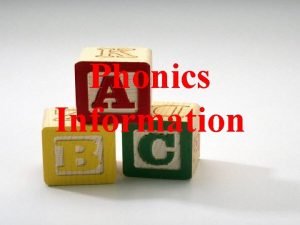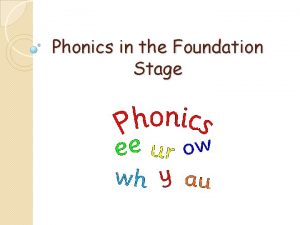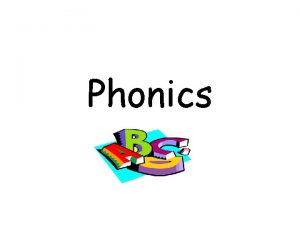Phonics and Early Reading What is phonics The



















- Slides: 19

Phonics and Early Reading

What is phonics? The way we teach children to read. Linking the letters to the sounds they make. The graphemes (letters) and their associated phonemes (sounds). Blending these sounds together from left to right to form words.

Why phonics? “Synthetic phonics offers the vast majority of young children the best and most direct route to becoming skilled readers and writers” Sir Jim Rose, Rose Review of Reading 2006

Glossary Grapheme - Written letters which represent one single sound (phoneme) e. g. ‘a’ ‘s’ ‘ph’ ‘ai’ What you see. Blending - Saying the individual sounds which make up a word and merging the sounds together to say the word. Phoneme - A single unit of sound which can be made using 1 or more letters eg. ‘ai’ ‘ee’ ‘t’ What you hear. Digraph – Two letters making one sound Trigraph – Three letters making one sound Split digraph – Two letters making 1 sound with another sound in the middle. Segmenting - The opposite of blending. Splitting a word into individual sounds, used for spelling and writing.

Letters and Sounds Chosen to follow the Df. E programme of Letters and Sounds. We will use RWI rhymes to reinforce each sound. There are six overlapping phases in Letters and Sounds. It starts at age 5 with the aim of children becoming fluent readers by age 7.

Phase 1 • • Environmental sounds (sirens, cars, birds etc. ) Instrumental sounds (musical instruments) Body percussion (clapping, tapping, stamping) Rhythm and Rhyme (reading rhyming books, singing nursery rhymes) Alliteration (bouncy ball, licking lollies ) Voice sounds (wheeee, boing) Oral blending and segmenting

Phase 2 Children will have experienced a wealth of listening activities. Children learn 19 sounds. s a t p i n m d g o c k ck e u r h b f ff l ll ss Children begin to read VC (two letter) words – at, in, on CVC (3 letter) words – man, sit, dog, They ready ‘tricky words’ – undecodable.

How to say the sounds Saying the sounds correctly is important. This is a clip which can be useful if you are unsure of what the sounds should sound like. https: //www. youtube. com/watch? v=ksbl. Mili. A 8

Sounding Out Recognising the letter sounds in a written word, for example: c – u - p c – a – t d – o – g

Segmenting Activity C-a-t = 3 phonemes 3 graphemes S-u-n = 3 phonemes 3 graphemes D-o-g = 3 phonemes 3 graphemes B-a-ck = 3 phonemes 4 graphemes

Tricky words Some everyday words in English have tricky spellings and can’t be read by blending. These are sometimes called high frequency or tricky words. These words just have to be learned by sight and flashcard-type games are a good way to practise these. They are included on the weekly overview on Class. Dojo. the was also all old people he my

Phase 3 – Advent 1 Children learn a further 25 sounds j v w x y z zz qu ch sh th ng ai ee igh oa oo ar ur ow oi ear air ure er The continue reading cvc words and practise blending and segmenting. Continue to learn more tricky words. Focus on reading and writing short captions and sentences.

Phase 4 – Advent 2 No new sounds are introduced in this phase. Children continue to practise spelling and reading words containing adjacent consonants. They read polysyllabic words - thunderstorm, chimpanzee, champion.

Phase 5 – lent onwards The children learn about sounds which are spelt in more than one way – ee (in seen) and ea (in seat), ou(in round) and ow (in down).

Phase 6 – Pentecost 2 and into year 2 The children will be able to read hundreds of words, doing this in three ways: They will be reading words automatically if they are very familiar. They will learn about tenses, suffixes, prefixes Their reading will become increasingly fluent, but spelling is known to lag behind. This phase addresses this.

Phonics Screening Check Statutory assessment takes place in June in year 1 and for those who did not pass the screening in year 2. Check of the children’s phonic knowledge. It is measure of expected progress. Children are asked to read 40 word which are a mix of real and pseudo words. The test takes place with the class teacher in school.

Assessment Every child on the phonics programme will have a learning record. Children will be assessed half termly using a phonics check. These learning records will help keep track of any gaps children have.

Book banding Children are assigned a coloured book throughout their time at English Martyrs. The books children bring home will be ones they can read at 95% fluency without overtly blending. Children also need to be reading the books they bring home at 2 -3 times to build up their fluency.

What to do at home Read with your child, to your child and listen to your child. Learn spellings Praise your child for trying. Sing an alphabet song together. Play ‘I spy’…This will help them to hear the initial sound in words. Continue to read rhyming books and sing nursery rhymes. Play rhyming games. More information is available on the website in the phonics policy.
 Synthetic phonics vs analytic phonics
Synthetic phonics vs analytic phonics While reading activities
While reading activities Rewards multisyllabic word reading strategies
Rewards multisyllabic word reading strategies Reading robot phonics play
Reading robot phonics play Early cpr and early defibrillation can: *
Early cpr and early defibrillation can: * Maiden erlegh school in reading
Maiden erlegh school in reading Test of early reading ability
Test of early reading ability Why was wudi called the martial emperor
Why was wudi called the martial emperor Reading early start
Reading early start Test of early reading ability
Test of early reading ability Reading aims
Reading aims While reading stage
While reading stage What is extensive reading
What is extensive reading Extensive reading
Extensive reading Intensive reading and extensive reading
Intensive reading and extensive reading Hát kết hợp bộ gõ cơ thể
Hát kết hợp bộ gõ cơ thể Slidetodoc
Slidetodoc Bổ thể
Bổ thể Tỉ lệ cơ thể trẻ em
Tỉ lệ cơ thể trẻ em Voi kéo gỗ như thế nào
Voi kéo gỗ như thế nào
